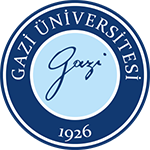ABSTRACT
Purpose:
We examined retrospectively 28 acromegalic patients who were seen over the previous seven-year period and aimed to evaluate their labora-tory clinical findings and post-treatment results.
Methods:
Acromegaly is diagnosed by specific clinical findings and labo-ratory tests such as increased serum levels of GH, IGF-1, and glucose-GH suppression level in OGTT. Serum GH level measuring less then 1 ng/mL three months after the operation was the criterion of cure in our study.
Results:
The total cure rate was 18.2% after the first operation. The cure rate was 20% in microadenoma while it was 16.7% in macroadenoma. After the second operation the cure rate was 66.7%. Permanent hypopituitarism risk after reoperation was 50%. There was only one patient (20%) whose GH level was below 1 ng/mL among the patients who received both gamma-knife and somatostatin analogue treatment, whereas there were six patients (60%) in the group receiving octreotide treatment for two years
Conclusion:
The success rate of surgery is determined by the experience of the surgeon as well as properties of the patient and initial GH level. In ac-romegaly patients in whom a complete cure could not be achieved after the first operation, adjuvant octreotide therapy is as successful as reoperation and can be the treatment of choice because of its less serious side effects compared to surgery



